Best Golf Drivers 2025: Our picks for every price point and playing level
Your guide to the best golf drivers of 2025 and all the things you need to know ahead of splashing the cash on your new big stick.

The prospect of upgrading into a new driver is perhaps the most exciting purchasing decision any golfer can make.
The biggest, most expensive and flashiest category of club you can buy, the world's biggest golf brands spend millions each year promising that their drivers are the longest, fastest and most forgiving on the market, while their reputations can be made or broken year to year based on which models end up in the bags of the pros.
While all of the best golf drivers offer performance-benefitting features, deciding which one is best for you can, at times, seem like a bit of a minefield. The great leaps forward made in golf technology in recent years now means drivers across different brands perform better, and more similarly, than ever before, making those incremental differences in speed, forgiveness and looks all the more important in figuring out the best driver for you.
As rounding up the pros and cons of every driver on the market in one article would be a mammoth task, here we've have picked out what we think are the very best drivers of 2025 in four key categories, selecting the absolute cream of the crop for every budget and playing level
If you're an everyday golfer who wants a blend of distance and forgiveness, we recommend you go start at the top and browse our picks of the best core drivers right now. Conversely, mid-to-high handicappers, beginners and those who struggle with the big stick should head down to our favourite forgiving drivers section, while better players who want more distance and control off the tee should head to our favourite low spin options.
We've also included some of the best budget drivers we've tested in 2025 as well, picking a couple of models that provide high-end results without the exorbitant price tag.
If none of these drivers quite fit the bill for your needs, you can check out our more specific buying guides for each driver category below:
- The most forgiving drivers of 2025
- The best drivers for beginners
- The best low spin drivers for better players
- The best mini drivers
Let’s take a look at what we consider to be the very best drivers in 2025, starting with our favourite of the lot...
The best golf driver of 2025
GolfMagic may receive a small advertising or affiliate commission if you buy via our links. Pricing may vary.
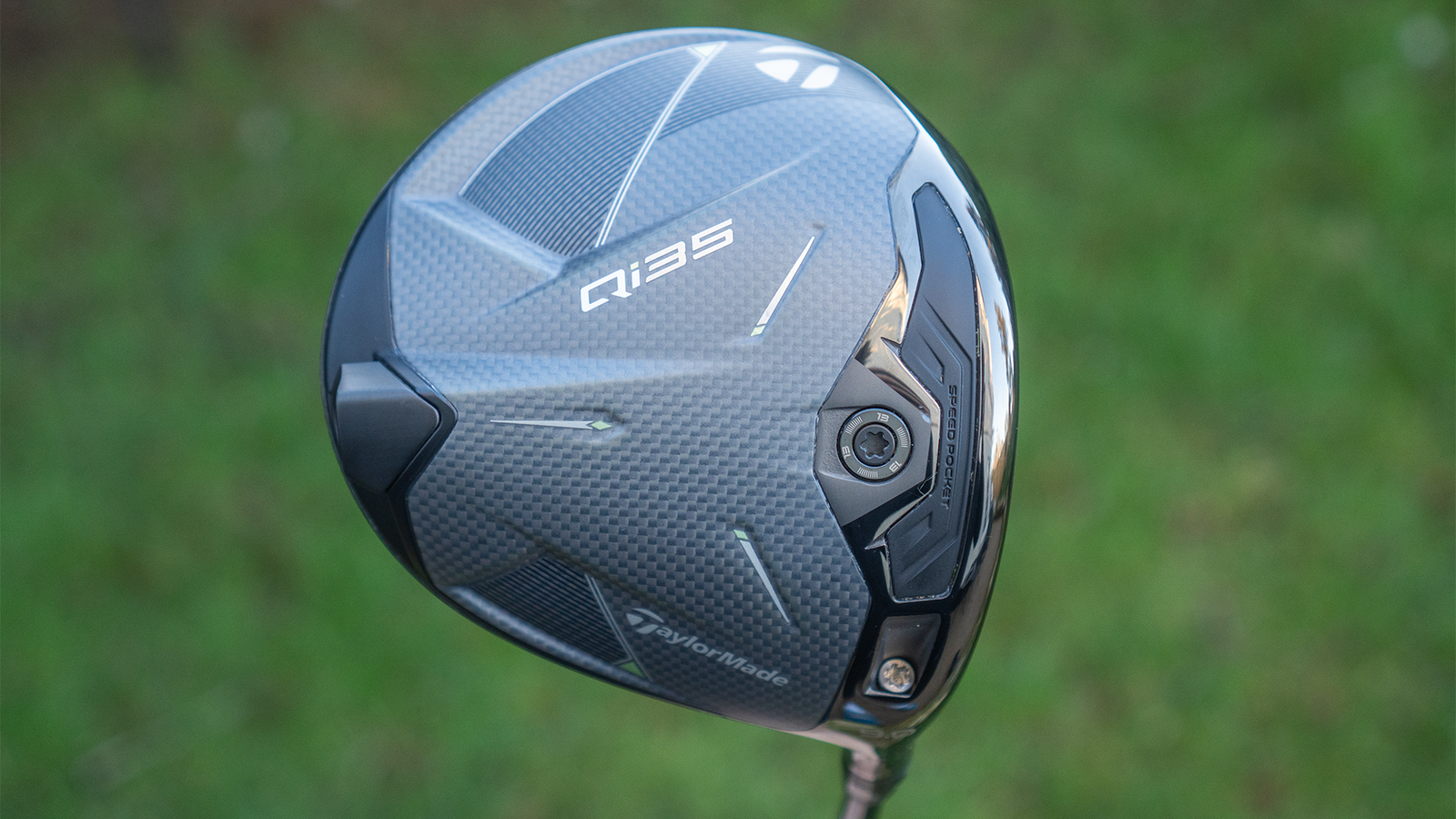
TaylorMade Qi35
Key Features:
- Fourth-generation carbon twist face creates maximum energy transfer with enhanced alignment benefits
- Trajectory adjustment system includes two moveable weights
- A near zero CG projection with incredible MOI creating efficient launch and spin over a larger area of the face
Price: £529
Pros:
- One of if not the most forgiving core driver available in 2025
- Feel and sound at impact if five-star
- Sole design is superb
Cons:
- Crown is potentially an acquired taste
The TaylorMade Qi35 builds on the success of the Qi10, combining speed and forgiveness for golfers of all levels. With a futuristic design inspired by supercars and fighter jets, the Qi35 boasts a light grey, multi-material construction featuring sharp lines, carbon textures, and green accents. While the aesthetics may divide opinion, the confidence-inspiring larger footprint and striking black carbon face are undeniable highlights.
WATCH OUR VIDEO REVIEW HERE
The standout innovation is the lowered balance point in the head, optimising spin and distance for improved performance. Testing revealed the Qi35 excels in forgiveness, particularly on off-center strikes. Shots hit from the heel or toe maintained consistent spin and speed, often surprising with their accuracy and distance. With 9K MOI, the Qi35 delivers exceptional forgiveness while producing a neutral, low-spin flight that maximizes distance.
Though not faster than the Qi10 on centre strikes, the Qi35 shines in mishits, making it a strong option for amateurs. Adjustability through the head weights further enhances its versatility, but the standard setup with a 13g rear and 3g front weight proved optimal during testing.
For Qi10 users, upgrading may not be necessary, but Stealth or older model users could find the Qi35 a worthwhile investment for 2025.
READ OUR FULL TAYLORMADE QI35 DRIVER REVIEW
The best core drivers for all levels and abilities
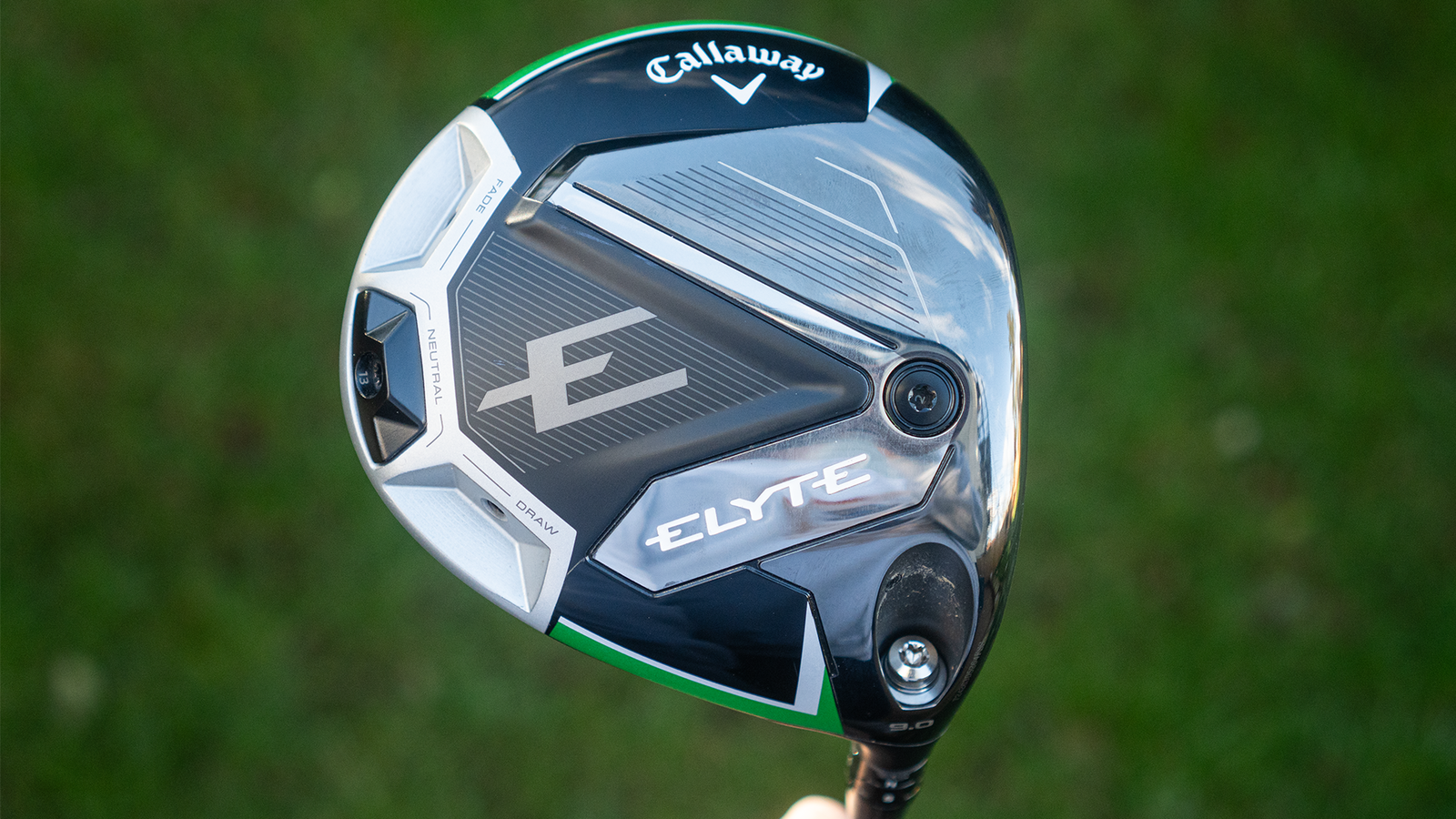
Callaway Elyte
Key Features:
- Enhanced swing speed via new aerodynamics of the head
- All new Thermoforged Carbon crown
- Ai10x face delivers superior ball speeds and launch conditions across the face
- 13g perimeter weighting
Price: £569
Pros:
- Fantastic blend of speed and forgiveness
- Confidence-inspiring look at address
- Explosive feel off the face
Cons:
- Sole design is a bit Marmite
Callaway’s new Elyte driver range for 2025 honours founder Ely Callaway, combining advanced technology with refined adjustability for golfers of all levels. Designed to boost ball speed and enhance forgiveness, the Elyte driver caters to handicaps ranging from +5 to 25, offering versatility through Movable Weight Tech and hosel adjustments.
The design of the Elyte driver is polarising. While Callaway’s signature green returns, some elements, like the large “E” on the sole, may divide opinion. However, at address, the elongated matte crown inspires confidence, marking a subtle improvement over the 2024 Ai Smoke model. Feel-wise, the Elyte delivers a soft yet explosive impact, rivalled only by Titleist in this category.
Performance is where the Elyte driver truly shines. Tested extensively in various conditions, it maintained high ball speeds on mishits and kept drives straight. The Ai10x face significantly improved forgiveness, while adjustable weighting helped reduce slices. On-course testing in Spain and a wet, windy day in England highlighted the driver’s versatility, with excellent accuracy and impressive ball speeds of up to 187 mph.
For golfers with older equipment, like the Mavrik, the Elyte driver offers noticeable advancements in speed and forgiveness. While current Ai Smoke users won’t see drastic differences, the Elyte is a top-tier contender for 2025.
READ OUR FULL CALLAWAY ELYTE DRIVER REVIEW
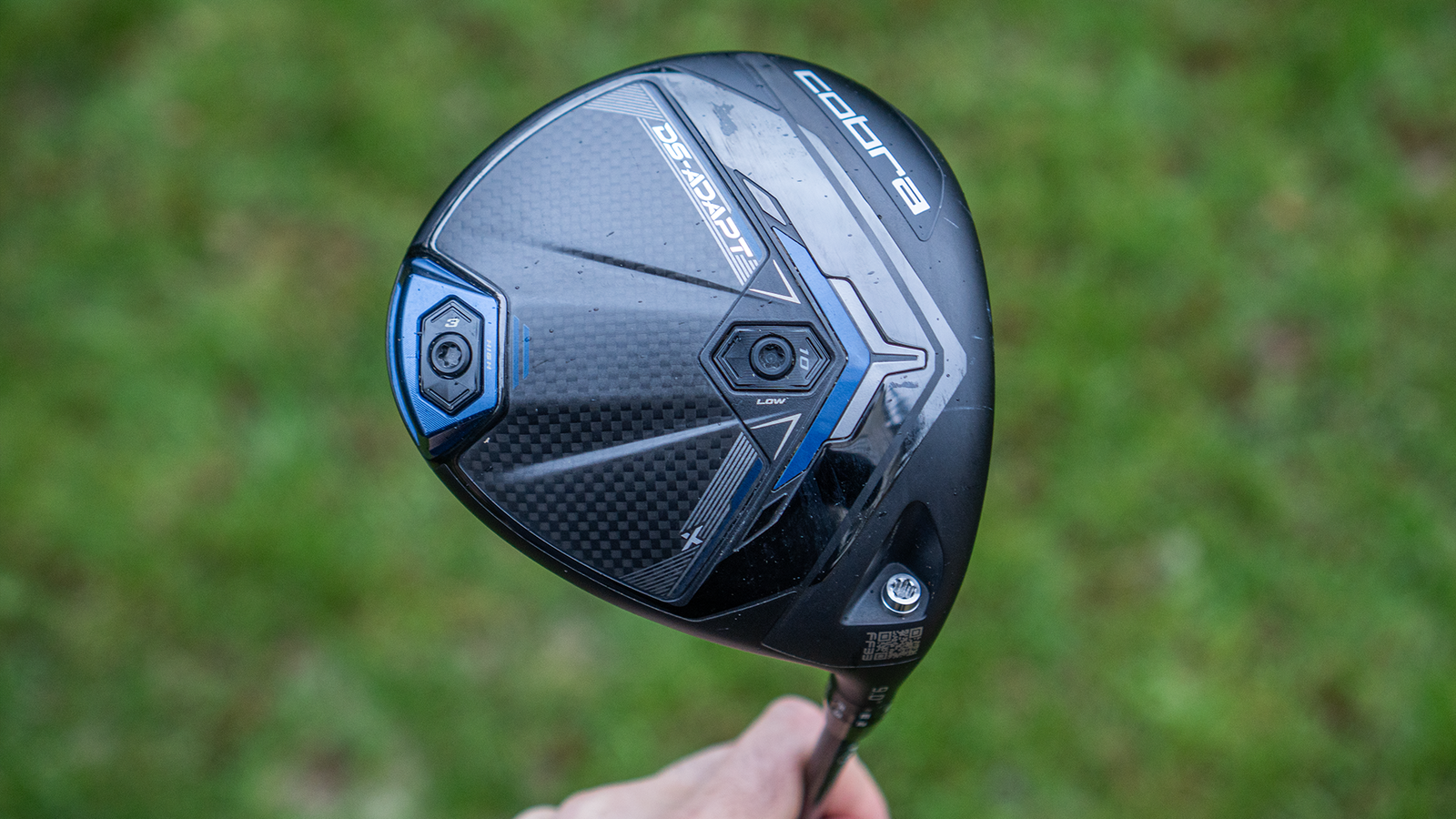
Cobra DS-Adapt X
Key Features:
- SmartPad technology to keep face square with loft and lie changes
- Progressive Aero shaping to reduce drag and increase club speed
- Movable weight technology to maximise shot shaping
- FUTUREFIT 33 Adjustable Hosel System
Price: £469 / $549.99
Pros:
- Superb aesthetics
- Excellent adjustability
- Feels and sounds as good as any driver on the market
Cons:
- Lacks the speed and forgiveness offered by other core models on the market
The Cobra DS-Adapt X is the core model in Cobra’s 2025 driver lineup, offering a balance of speed, spin, and forgiveness. Featuring groundbreaking technologies like the FUTUREFIT33 adjustable hosel, which provides 33 loft and lie settings, and Smartpad sole geometry that keeps the clubface square at address, the Adapt X is built for versatility.
Aesthetically, the Adapt X is a standout, maintaining the sleek, angular design of the Darkspeed line with enhancements. Metallic blue accents, carbon panels, and discreet branding contribute to a dynamic, aerodynamic look. At impact, it delivers a punchy sensation and a satisfying crack, appealing to players who value feel and feedback.
Performance-wise, the Adapt X delivers strong ball speed and optimal spin rates. However, its forgiveness lags behind its sibling, the Max-K. During testing, finding the center of the face proved challenging, with offline dispersion and consistency falling short compared to the Max-K. While the X offers better speed, its playability may not suit everyone.
At a competitive price point, the Adapt X is a solid choice for players seeking speed and adjustability. However, for those prioritising forgiveness, the Max-K may be a better fit. As always, a professional fitting is highly recommended.
READ OUR FULL COBRA DS-ADAPT X REVIEW
The most forgiving golf drivers of 2025

TaylorMade Qi35 Max
Key Features:
- Fourth-generation carbon twist face for maximum energy transfer and alignment benefits.
- New symmetric inertia generator includes a massive 34g tungsten weight, creating the best launch conditions we have seen in a 10k TaylorMade driver
- High inertia shape paired with Thru-Slot Speed Pocket, 4° loft sleeve and Infinity Carbon Crown
Price: £529
Pros:
- Incredibly forgiving
- Still packs plenty of punch
- One of the easiest drivers on the market to hit
Cons:
- Aesthetics may be a bit Marmite
TaylorMade’s Qi35 Max driver aims to dominate the 10k MOI sector in 2025, prioritizing forgiveness and consistency for golfers of all levels. Central to its design is the new symmetric inertia generator, featuring a 34g tungsten weight positioned low and back for improved launch and forgiveness. Combined with chromium carbon construction, this driver optimises flight, spin, and ball speed across the face.
Visually, the Qi35 Max makes an impact with its large profile and futuristic aesthetic, inspired by high-performance sports cars and fighter jets. The light grey chromium carbon finish, dynamic sole design, and modern crown deliver a bold, tech-forward look. The fourth-generation carbon face feels lively and responsive, providing ample feedback while delivering a satisfying sensation at impact.
While the Qi35 Max isn’t designed solely for speed, it still generates impressive power. It excels in forgiveness, maintaining consistent spin, ball speed, and dispersion even on off-center hits. The slight draw bias helps correct mishits, and the increased spin benefits players with slower swing speeds.
For those entering the 10k MOI category, the Qi35 Max is an outstanding option. However, Qi10 Max owners won’t see dramatic improvements. Get fitted for optimal results, as this forgiving, easy-launching driver is among 2025’s best.
READ OUR FULL TAYLORMADE QI35 MAX DRIVER REVIEW
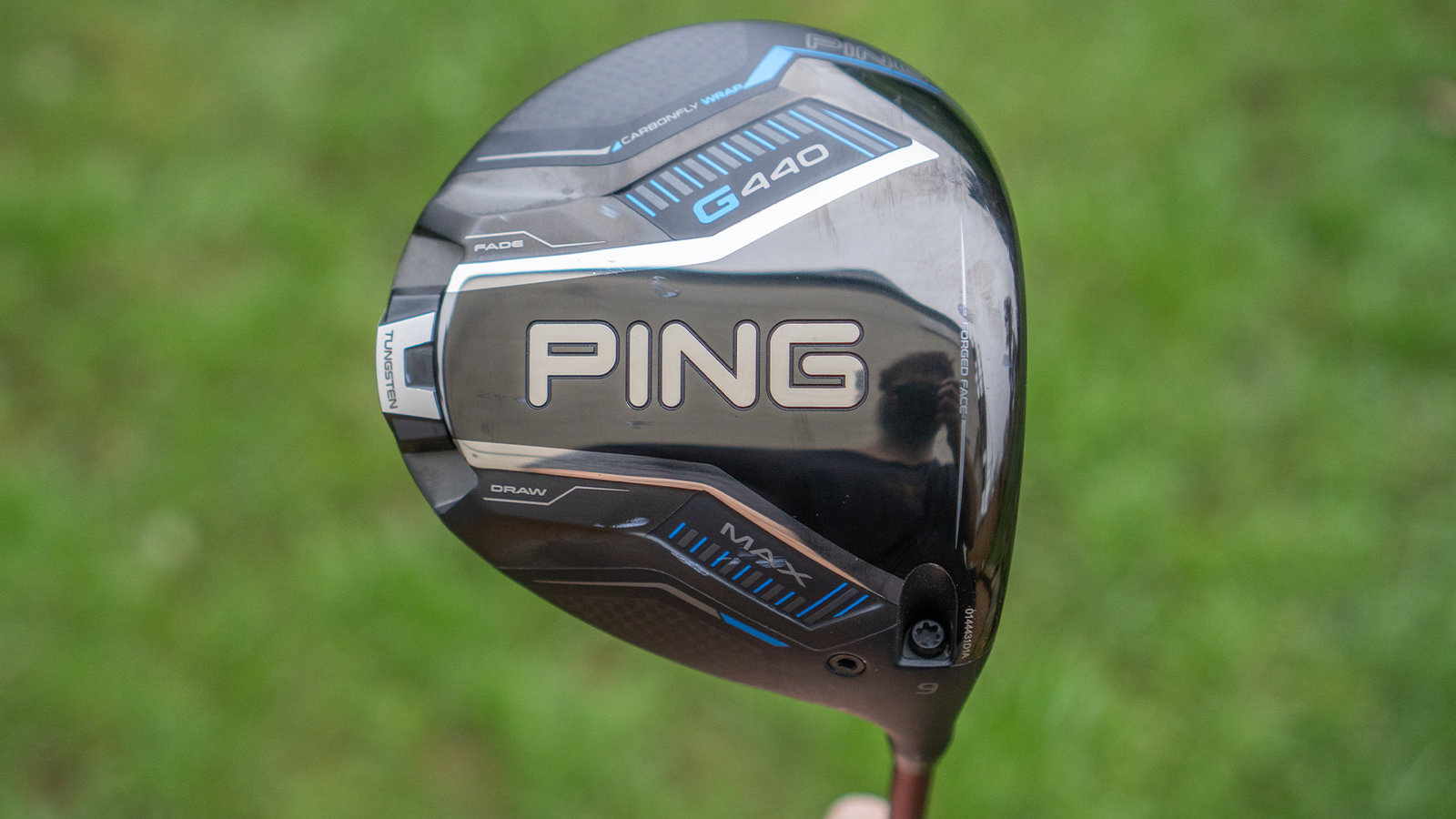
PING G440 MAX
Key Features:
- Free hosel design and Carbonfly wrap save weight, lower the CG
- Shallow, thinner face increases ball speed, distance
- Lighter overall system weight swings faster at 46” standard length
Price: £529 / $599.99
Pros:
- Seriously good shelf appeal
- Delivers five-star performance across the board
- Noticeably faster than the G430
Cons:
- There are more workable drivers on the market in 2025
- Top end of market for price
The PING G440 Max offers a fantastic blend of forgiveness, playability and speed, making it an excellent choice for golfers of all abilities.
If you have an exceptionally high swing speed, the PING G440 LS may be a better fit for you, but we think the G440 Max is the perfect driver out there a wide range of players wanting a reliable, confidence-inspiring option off the teee.
The G440 Max is quintessentially PING. From the large branding on the sole to the carbon crown with turbulators, everything about this driver is exactly what you would expect from the brand.
Returning to the blue colourway that was so popular in both the G30 and G series drivers, the 440 has real nostalgia while still providing a very modern feel that has brought the look up to date.
Down at address, the 440 Max has a very confidence-inspiring look behind the ball that fans of PING will know and love, featuring turbulators across the front and a split texture design with a carbon finish taking up the rear half of the crown.
In terms of performance, this driver allows you to quickly and easily manipulate your ball flight with instant results. Forgiveness has always been one of PING’s strong suits, and the G440 is no different; from low or high on the face and out of the perimeter, this driver does a fantastic job of keeping your ball on the shorter grass.
If pure forgiveness and reliable distance is at the top of your priorities list, the G440 Max is one of the best options on the market in 2025 well worth your consideration.
READ OUR FULL PING G440 MAX DRIVER REVIEW
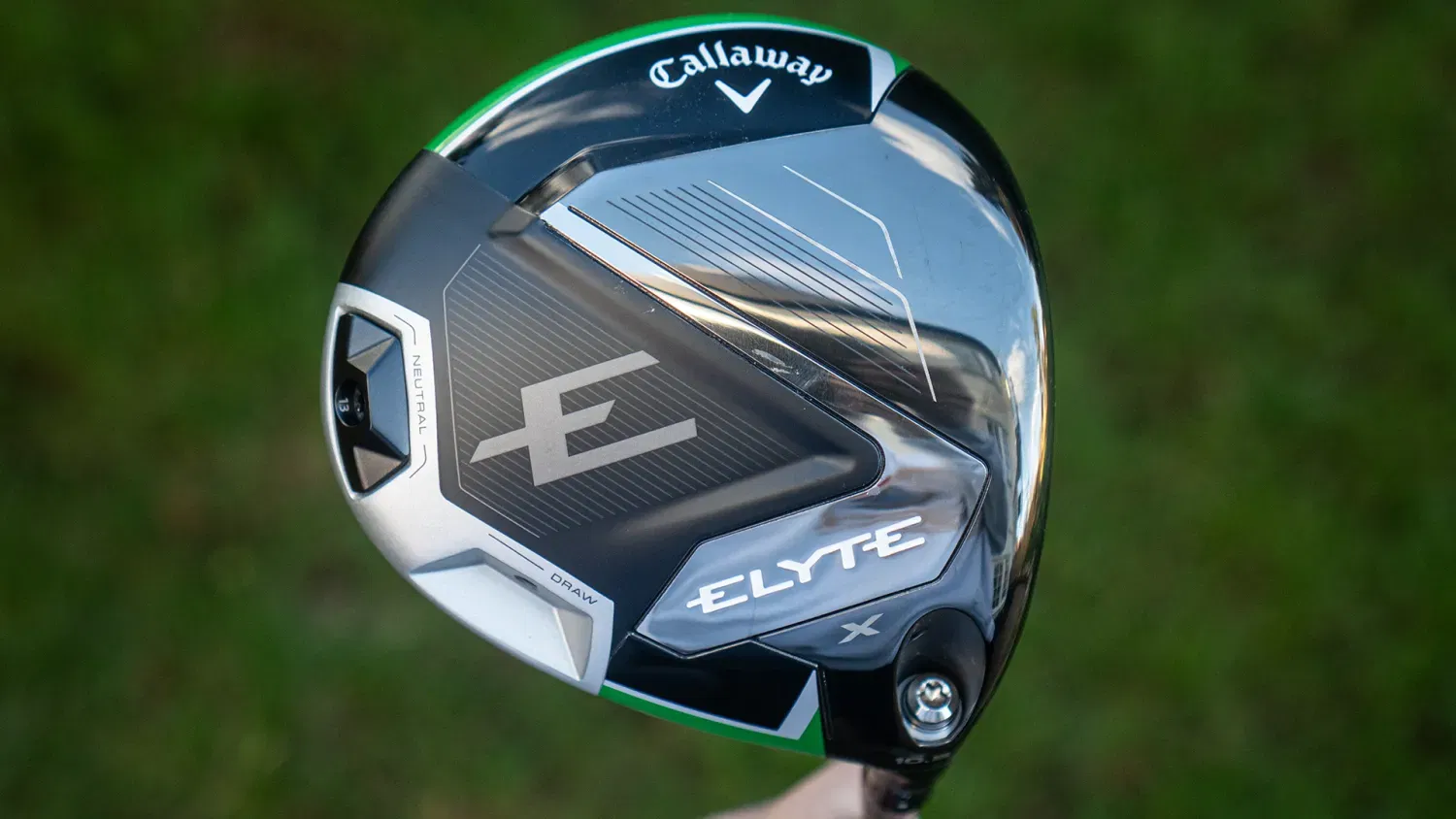
Callaway Elyte X
Key Features:
- Neutral and draw settings with an adjustable 13g weight
- Thermoforged Carbon crown enables fast head speeds while optimising launch and spin
- Ai10x Face delivers 10x more control points than the Ai Smart Face
Price: £499
Pros:
- Draw bias setting will really help those who struggle with a slice
- Lovely, robust feel from across the face
- Better adjustability than the Paradym Ai Smoke Max D
Cons:
- Higher launch and spin not ideal for faster swing speed players
The Callaway Elyte X is the most forgiving driver in the 2025 Elyte range, tailored for players seeking maximum launch and forgiveness. With a 460cc head and Thermoforged carbon crown, it retains ball speed across the face while optimising spin and launch. Its adjustability includes a moveable weight for neutral or draw bias settings, complemented by the new Ai10x smart face, which features 10x more control points for enhanced performance.
Aimed primarily at beginners and slicers, the Elyte X offers a versatile option for golfers looking to boost forgiveness and launch. Its bulbous yet aerodynamic head inspires confidence, framing the ball beautifully. The matte black crown and silver-green accents add a premium aesthetic, making it one of Callaway’s most attractive designs to date.
In testing, the Elyte X impressed with consistent ball speed and remarkable forgiveness. While not the fastest in the lineup, it’s one of the quickest forgiving drivers available in 2025. Even off-centre hits retained distance and accuracy, and its draw-bias adjustability helps combat slicing effectively.
For golfers prioritising forgiveness and particularly those looking to negate a slice, the Elyte X delivers excellent performance, striking aesthetics, and improved adjustability, making it a standout choice for 2025 despite its premium price.
READ OUR FULL CALLAWAY ELYTE X DRIVER REVIEW
_1.png?width=1600)
Cobra DS-Adapt Max-K
Key Features:
- SmartPad technology to keep face square with loft and lie changes
- Progressive Aero shaping to reduce drag and increase club speed
- Movable weight technology to maximise shot shaping
- FUTUREFIT 33 Adjustable Hosel System
Price: £469
Pros:
- One of the best-looking drivers of 2025
- Exceptional levels of adjustability
- Very easy to hit with bags of forgiveness
Cons:
- No notable cons
The Cobra DS-Adapt Max-K driver is a standout addition to the 2025 market, combining exceptional forgiveness with cutting-edge customisation. Breaking the 10k MOI barrier, this driver is designed to deliver unparalleled stability and accuracy.
Like the core model DS-Adapt X, the Max-K's FUTUREFIT33 adjustable hosel offers 33 loft and lie configurations, while the Smartpad sole technology ensures the clubface stays square at address, no matter the setting. This makes it perfect for beginners and higher handicappers looking to negate particularly nasty ball flights they may have picked up.
In performance, the Max-K prioritises forgiveness over raw speed, making it a fairway-finding machine. Even off-centre hits benefit from the stability and face technology, reducing errant shots. With spin hovering around 3,000 RPM, the driver offers a neutral, workable ball flight.
At £469, the Max-K delivers excellent value, outperforming pricier competitors in forgiveness and playability. Ideal for players seeking maximum forgiveness and customisation, it’s among the best beginner drivers you can get for 2025.
READ OUR FULL COBRA DS-ADAPT MAX-K DRIVER REVIEW
The best low spin drivers for better players
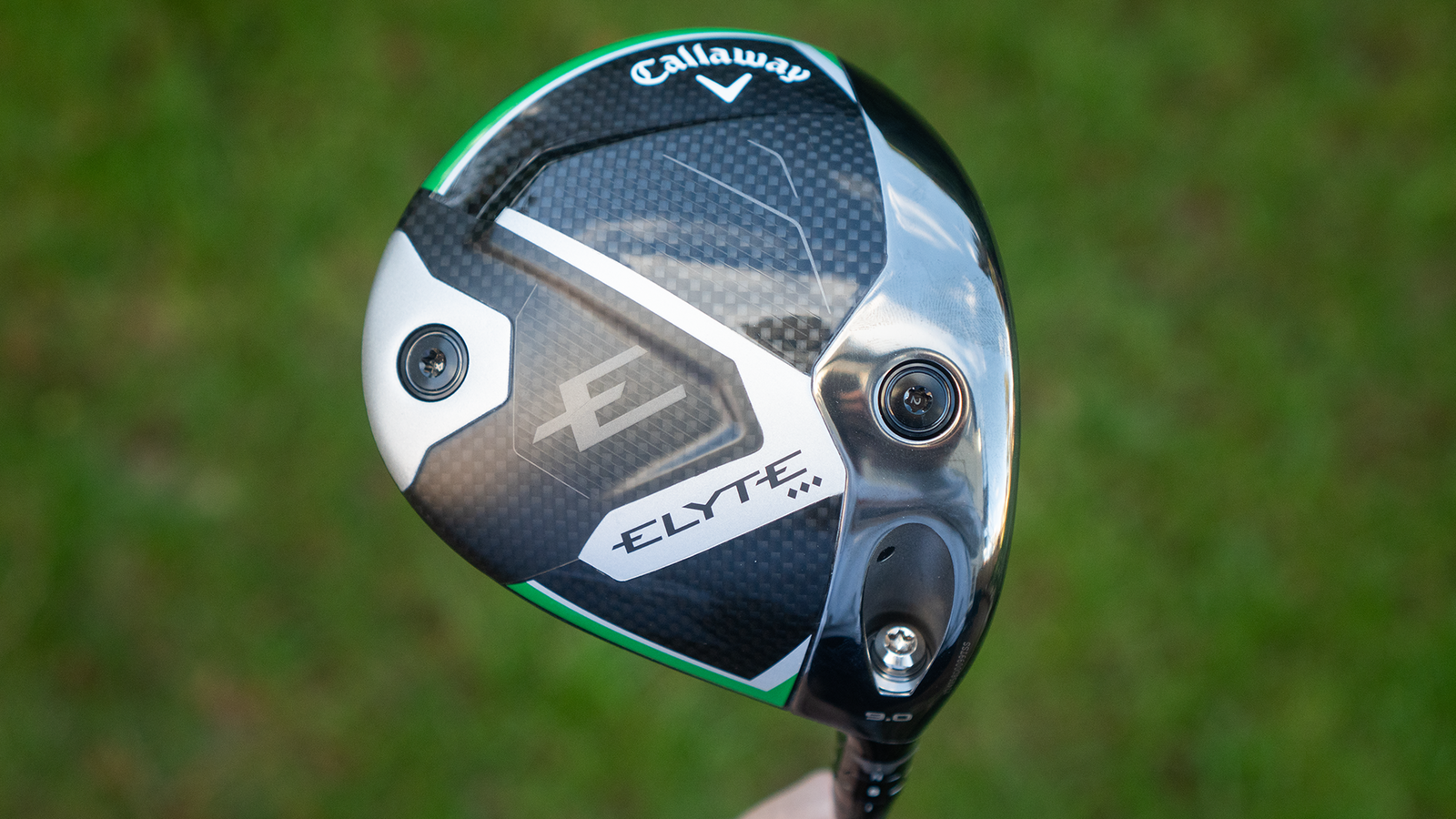
Callaway Elyte Triple Diamond
Key Features:
- Enhanced swing speed via new aerodynamics of the head
- All new Thermoforged Carbon crown
- Ai10x face delivers superior ball speeds and launch conditions across the face.
- 450cc head for the better player
- Interchange front-back weights
Price: £529
Pros:
- One of the fastest drivers of 2025
- Sleek profile looks fantastic behind the ball
- Delivers low spin rates for fast swing speed players
Cons:
- Will only be suitable for a very small selection of golfers
The Callaway Elyte Triple Diamond is the standout low-spin driver of 2025, designed for skilled players seeking precision and speed. With a compact 450cc head and gloss crown, it offers a premium aesthetic and confidence-inspiring profile at address, making it a top choice for better players.
This model isn’t about forgiveness—high handicappers should look elsewhere. Instead, it’s built for speed and control, aided by enhanced aerodynamics and the new Ai10x face. Testing revealed the driver feels fast through the swing, with improved aerodynamics noticeable in transition. While its feel off the face is slightly muted compared to other Elyte models, its performance stands out, offering impressive ball speeds and the potential for shot-shaping.
Adjustability options, including hosel settings and weight placement, allow players to fine-tune for their desired ball flight. Surprisingly, this year’s Triple Diamond felt less fade-biased than past iterations, making it more versatile while maintaining its low-spin profile.
While it’s not the most forgiving or user-friendly option, the Elyte Triple Diamond excels in speed and precision, cementing its place as perhaps the elite choice for advanced players in 2025. If you’re seeking a fast, low-spin driver, this is worth a serious look.
READ OUR FULL CALLAWAY ELYTE TRIPLE DIAMOND DRIVER REVIEW
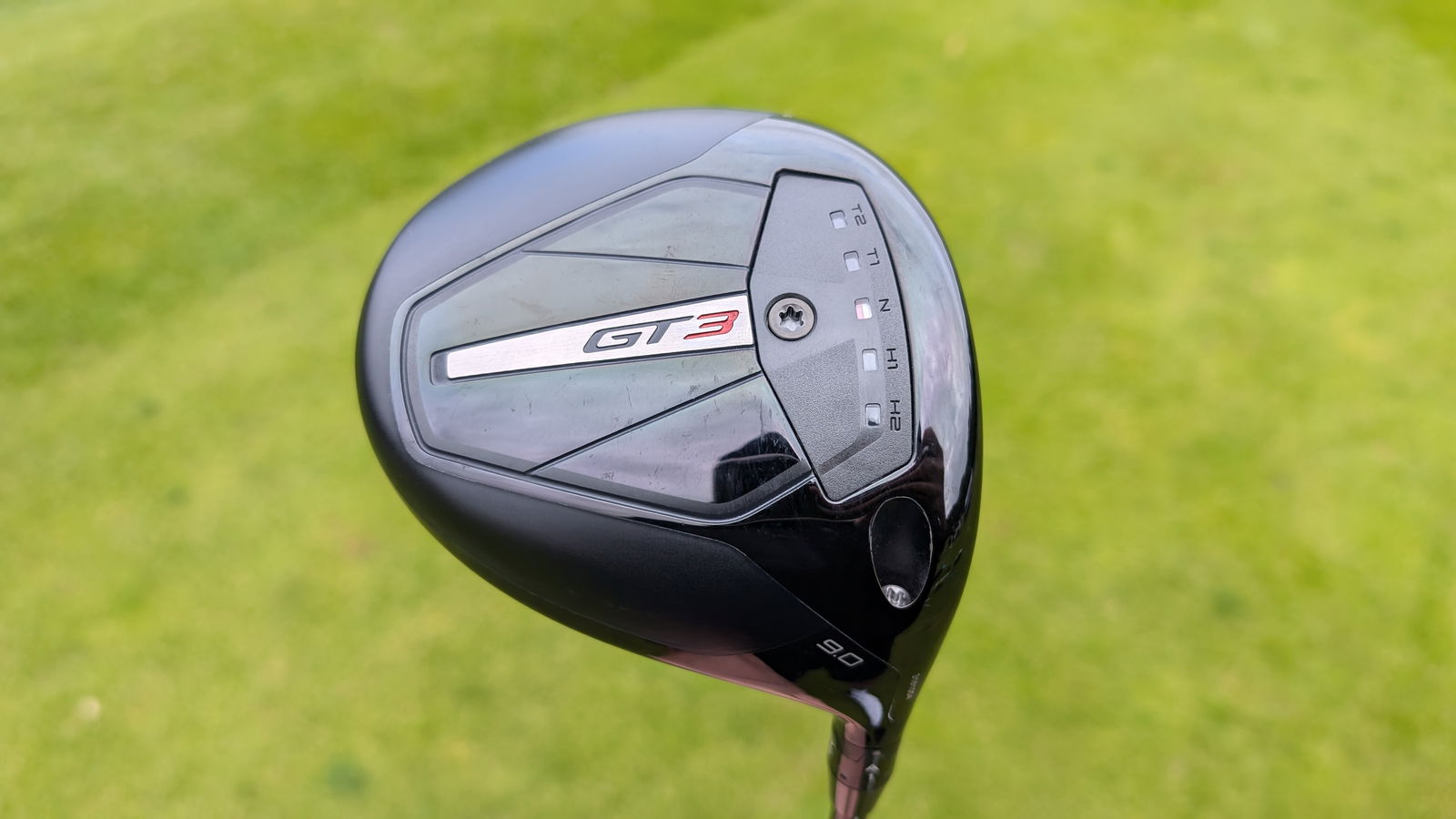
Titleist GT3
Key Features:
- Seamless Thermoform Crown: Constructed from brand new Proprietary matrix polymer
- Titanium speed ring: reinforces and stabilises the perimeter of the clubface for improved ball speeds
- Adjustable CG track: fitters and golfers can select between five CG locations to achieve optimal ball flight and launch
Price: £579
Pros:
- Incredible ball speeds from across the face
- Compact head design will suit the eye of the better golfer
- Adjustable CG is an excellent feature
- Looks and sounds fantastic
Cons:
- One of the most expensive drivers on the market
One of three new models from Titleist's new GT range, the GT3 offers explosive ball speeds, classic Titleist aesthetics and five star sound and feel.
Titleist's latest innovation is a new Seamless Thermoform Crown which is constructed using a brand new Proprietary matrix polymer that allows weight to be saved in the head and repositioned to improve forgiveness and speed across the face.
The GT3 also benefits from having an adjustable CH track, allowing golfers to fine tune the centre of gravity to their swing for optimal launch and ball flight.
The GT3 performed incredibly during testing, delivering blistering ball speeds from across the face, while still managing to maintain accuracy and spin rates for optimal performance.
Titleist's previous TSR range was arguably the best looking driver collection of all time, and although the GT line hasn't surpassed TSR in terms of overall visual appeal, it has certainly matched it.
The only slight negative we could find in the GT3 is the very high price point, which will understandably put some golfers off.
Other than that, the GT3 is an outstanding driver, ideally suited to low & mid handicap golfers looking for stand out aesthetics, and best in class performance and speed.
READ OUR FULL TITLEIST GT3 DRIVER REVIEW
The best affordable drivers for golfers on a budget
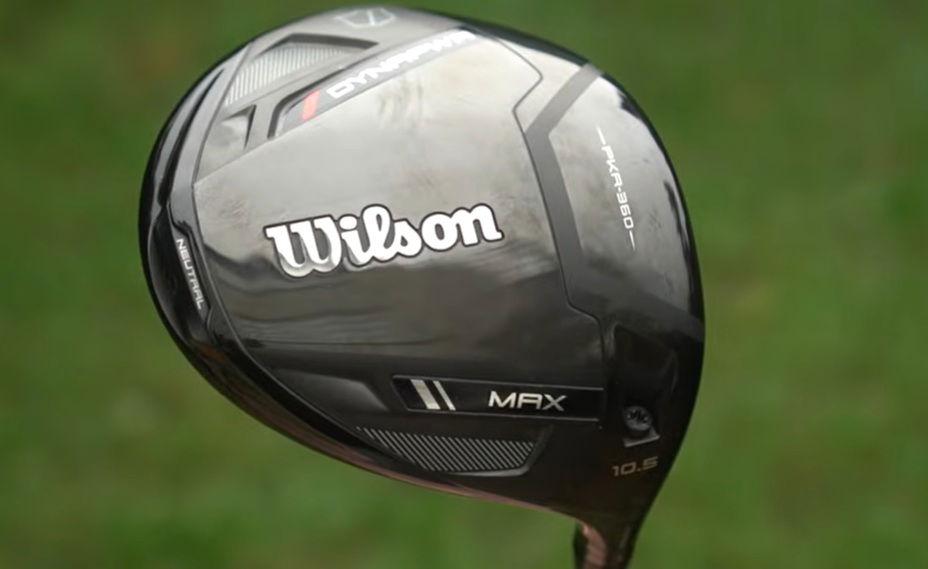
Wilson Dynapwr Max Driver
Key Features:
- Stability Driven Shaping - The increased front-to-back and heel-to-toe length delivers a higher moment of inertia (MOI) than ever before, ensuring the straightest tee shots.
- Maximum Forgiveness and Control - The flippable (19g) rear weight allows golfers the ability to fine-tune their left to right shot shaping to deliver straighter tee shots.
Price: £449
Pros:
- Extremely forgiving
- Compact and confidence-inspiring at address
- Sounds and feels fantastic
Cons:
- Ball speed is slightly lower than other new drivers
- Less adjustability than some competitors
- Wilson's most expensive driver to date
Coming in at a cool £449, Wilson's Dynapwr Max driver might be its most expensive, but it's still significantly cheaper than any new drivers from Golf's 'Big 5' and is without a doubt the brand's best driver to date.
The new Dynapwr 10K Max Driver from Wilson represents a huge leap forward in aesthetics, with premium black gloss crown, although the the red alignment detail might divide opinion on the crown.
At address, the 10K model is surprisingly compact for a high-MOI driver, looking closer to a TaylorMade Qi10 Max Driver than the PING G430 Max 10K Driver.
We found this driver to be one of the most forgiving we have tested in 2025, so if you are looking for a fairway finder that carries a truly premium feel without the ridiculous price tag, this should be right at the top of your list.
READ OUR FULL REVIEW OF THE WILSON DYNAPWR 10K MAX DRIVER
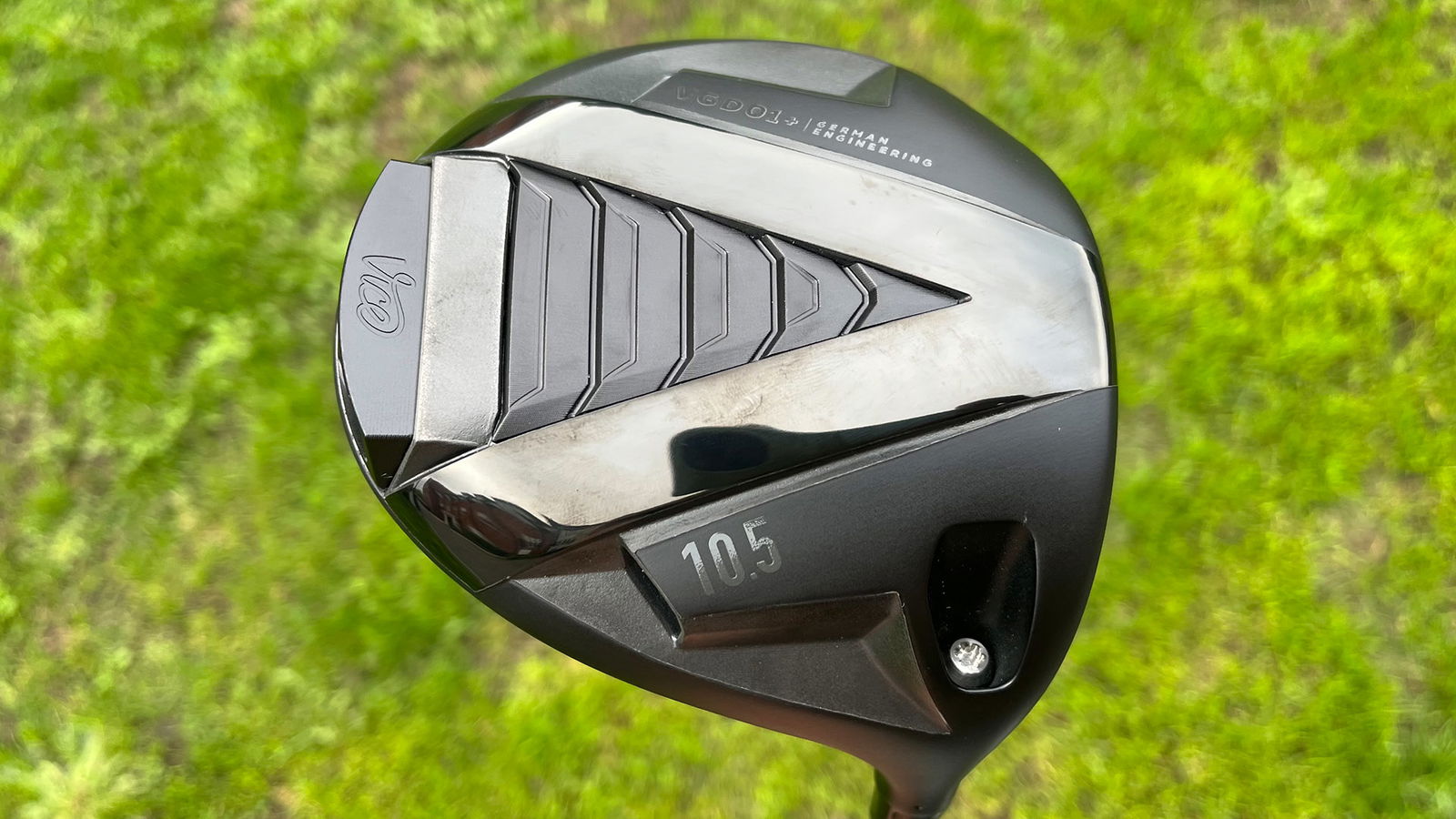
Vice VGD01+
- Middle of the road distance
- No fitting options (but it does have a 60 day guarantee)
- Design might be a bit busy for some
One of the only affordable low-spin drivers to hit the market, Vice's VGD01+ builds on the groundwork laid by original VGD01 by offering a genuine low spin model designed for power hitters on a budget.
The looks of the VGD01 are sleek, modern and well-presented, with the lightweight, aerodynamic head helping faster swingers generate effortless speed. And while it's not the fastest on this list, the VGD01+ still generated impressive numbers for us along with a nice, penetrating ball flight better players will definitely appreciate. It also turned out to be one of the most forgiving drivers on this list, making it a great choice for improving players looking to unlock more distance without sacrificing too much on off-centre hits.
The one let-down of the Vice, particularly for better players looking to really dial in their driver, is the lack of fitment options, with just two model-exclusive Aldila shafts available to choose from. It does come with a 60 day satisfaction guarantee however, so you can send it back if neither shaft suits you.
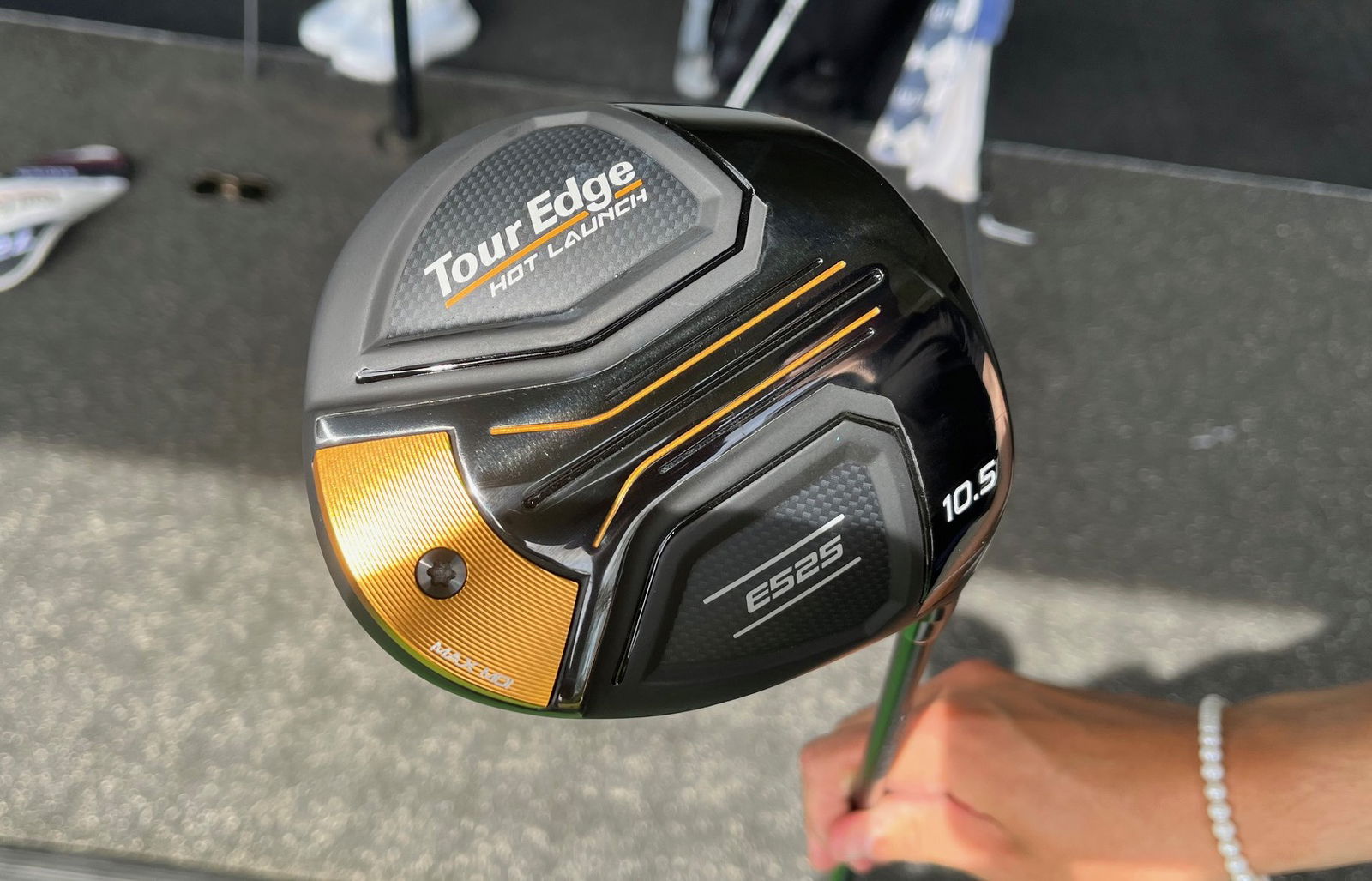
Tour Edge Hot Launch E525
Key Features:
- MOI boosting rear sole weight: strategically placed to the extreme rear of the clubhead with more mass concentrated at the extreme trailing edge of the clubhead
- Ridgeback Technology: rail on the crown boosts power across entire face and serves as useful alignment aid
- Diamond Face VFT: features 37 distinct thick and thin diamond-shaped "mini-trampolines" behind the face
- 360° Cup Face Design: increases amount of face flexing on off-centre hits to achieve higher ball speeds
- Centre-Sole Rail Design: rail extends from leading edge to trailing edge for low CG for high-launch shots
Price: £179
Pros:
- Very affordable
- High launch with good apex
- Great alignment aid on crown
- Good entry-level driver for beginners
Cons:
- Lacks feel and feedback at impact
- Not as long as more premium drivers
- Tinny, high-pitched sound
if you’re just getting into golf and don’t want to splash out on a premium driver, the Tour Edge Hot Launch E525 should definitely be towards the front of your list.
The Hot Launch E525 is a straightforward, confidence-boosting driver that will launch the ball nice and high for you.
That really is the key strength of his club.
It's also got a great alignment aid on the crown and the sole design very much appeals.
But if you're a player who values feedback, stability, and distance, or you’ve already progressed beyond beginner level, then you’ll likely outgrow this driver very quickly.
In that case, stretching your budget a little further will pay off in performance.
It just lacks the feel, forgiveness and distance to truly compete with the best drivers that you have read about towards the top of this guide.
For beginners or high handicappers after a budget driver that gets the ball airborne with ease though, this is definitely a solid option.
READ OUR FULL TOUR EDGE HOT LAUNCH E525 DRIVER REVIEW
What should I consider when looking for a new driver?
Finding the perfect driver is one of the most complex tasks any golfer can embark on when adding new equipment to their bag, and a number of variables can impact whether a driver is right for the swinger.
While advancements in technology mean that the difference in forgiveness and distance between drivers is now incremental at best in the hands of most golfers, there are still plenty of factors that make all the difference when it comes down to tailoring the club to match the player. These include:
Materials and looks
While most golf drivers are fairly similar in 2025 in terms of the materials used to construct them, they can vary wildly in terms of shape, make-up and overall aesthetic. This can have huge ramifications in inspiring confidence at address.
With most companies now using a combination of titanium and composite materials like carbon fibre to construct their clubs, most if not all have been able to design 460cc drivers (the maximum driver size allowed by golf's governing bodies) without increasing weight. This means players can swing the club faster and hit the ball further and more accurately because of the larger sweet spot on the face of the driver.
When it comes to the look of a driver, you also want to not only find the right shape as you stand over the ball at address, but also the right design and colour that fits your eye.
Some drivers are shiny, others have a matte finish on the crown that reduces glare. Some are modern and colourful, while others carry a more classic, minimal aesthetic. Figuring out what you like the most is purely a matter of personal preference.
Sound & Feel
While finding the right components for your driver is fundamental, the feel of a driver and sound it makes at impact is a huge factor in inspiring confidence is going to make you want to keep coming back for more.
If your driver doesn't sound and feel right to you at impact, then it's going to become pretty unattractive to you. Yes, there are no pictures or sounds on the scorecard, but this in all likelihood is an expensive purchase for you and you want to feel satisfied every time you pull the trigger.
While made of similar materials, drivers can vary wildly in terms of sound and feel. Callaway and TaylorMade drivers, for instance, produce a more muted 'thud' and a softer sensation off the face, while PING's drivers, as the name suggests, are renowned for their metallic 'ping' sound at contact and have a firmer, more metallic sensation.
Find yourself a driver that not only works for you off the tee peg, but also gives you a satisfying feeling at impact and makes you want to keep coming back for more.
Swing Weight
This one often goes overlooked, but it's an incredibly important feature of a golf club to note.
Knowing how much your driver weighs (total weight), and of that weight, how much of it is in the head (swing weight), is becoming a critical part of improving a player's driving.
The total weight and the head weight of your driver have to be matched to your physical strength, your swing tempo and your golfing athletic ability.
Play with too light of a total weight or swing weight for your strength, tempo and ability and your percentage of off-centre hits increases.
Can I benefit from a high MOI driver as a beginner?
MOI is a common phrase in golf, particularly when it comes to the driver. It refers to a club's forgiveness, specifically its resistance to twisting at impact.
A driver with a high MOI means it is less likely to twist or rotate when you strike the ball outside the centre of the face, making high MOI drivers far more suited to beginners less likely to find consistent contact with the middle of the driver.
Which driver loft is right for my swing speed?
Driver loft refers to the angle of the face in relation to the vertical, and each model is typically available between 8 and 13 degrees.
Lower lofted clubs (e.g. 8 degrees) have a slightly lower trajectory, but go a little further in the hands of players who can generate plenty of clubhead speed.
Higher lofted clubs (e.g. 13 degrees) are better for players with slower swing speeds or players that need extra help to get the ball airborne.
Lofts in between (e.g 10.5 degrees) are for the vast majority of players who have neither particularly fast nor slow swing speeds.
What are the differences between adjustable and fixed loft drivers?
The plethora of adjustable golf drivers now available means you can tinker all day and play about with your loft. To do this, you simply remove a screw in the heel of the club, connect the shaft to the clubhead and replace it with a predetermined setting.
However, be careful when adjusting the loft of your golf driver because that will sometimes also change the lie angle - the angle of the shaft to the ground at address. A change to the lie angle will affect your ball flight horizontally left or right.
Fixed loft drivers are now more common at the lower-priced end of the market, however even budget club manufacturers are beginning to roll out driver options with more adjustability. We strongly recommend you opt for one, especially if you are looking to maximise your performance with the driver.
Which golf driver features are most beneficial for slicers?
Golf companies have made great strides in addressing the need for slicers in recent years, with many now implementing anti-slice measures as standard practice. They typically do this in two ways, which you should look out for if you're looking for a driver that'll help a slice back under your control.
Draw-biasing
Many manufacturers now offer driver models that are designed and built with a natural draw bias, meaning the head of the club sits more closed at address to promote a squarer face at impact. Some, like Cobra's DS-Adapt Max-D, signpost their draw bias in the name.
Weights
Using weights in the clubhead of a driver can have a significant impact on improving a player's ball flight as it changes the club's CG and MOI properties.
Of the drivers that feature weights, you can expect to see sliding weights or plugs from anything between one and 20 grams on the sole of the club.
Many draw-biased drivers now position more weight towards the heel of the club, this tweak promoting a more closed driver face at impact and encouraging a right-to-left ball flight.
How do I determine the right shaft stiffness and length for my new driver?
Shafts are important in all golf clubs, but especially drivers.
Using lighter, less stiff shafts will produce a higher, right-to-left biased ball flight, while heavier, stiff shafts will launch the ball lower with a higher tendency to shape the ball to the right.
The right shaft can help players hit the ball further, straighter and more consistently. Most manufacturers will offer drivers in regular (R), stiff (S) and extra stiff (XS) shaft flexes.
Other flexes include light or ladies flex (L), senior (A) and more extra stiff options (XXS, XXXS).
Although the legal limit for the length of a driver is 48 inches, most drivers have a shaft of around 45 or 46 inches to strike the best balance of distance and control.
A custom fitting session will help find the perfect shaft flex for your game.
How often should I change my golf driver?
A question that often warrants many different answers.
Golf driver technology is now so advanced that all changes year to year are very small, so constantly changing your golf driver is not usually necessary.
However, there are reasons why you should consider changing, as listed below:
Golf swing change - A dramatic change in your golf swing (such as a change in AOA, face angle, or swing speed) will mean your driver that was working for your old swing may not be optimal for your new swing. If this is the case then it’s best to see a local PGA Pro or a qualified golf custom fitter to determine what needs to be done. It could be an adjustment to your current driver or even a new shaft.
Shot Data - We would always recommend using a launch monitor every year to ensure that your driver is still optimal for your swing. You may find some major or minor changes have occurred. The best golf pros on the PGA Tour do this every week in order to keep on top of things. If you are serious about your golf game then we strongly recommend you check out your shot data at least once a year.
Time - Every three to five years is when we recommend you take a look at new golf driver models from the game’s biggest brands as that is how long it takes to notice significant changes in driver technology for consumers.


